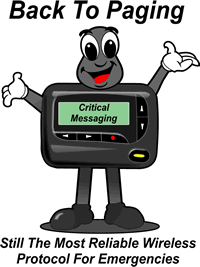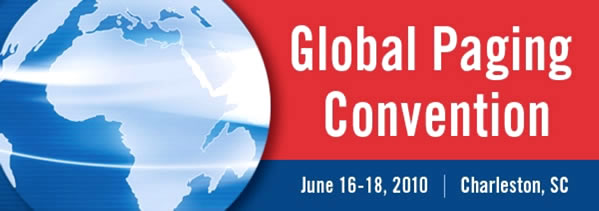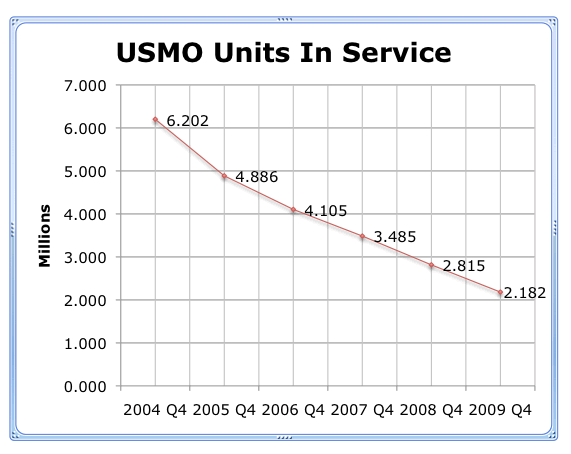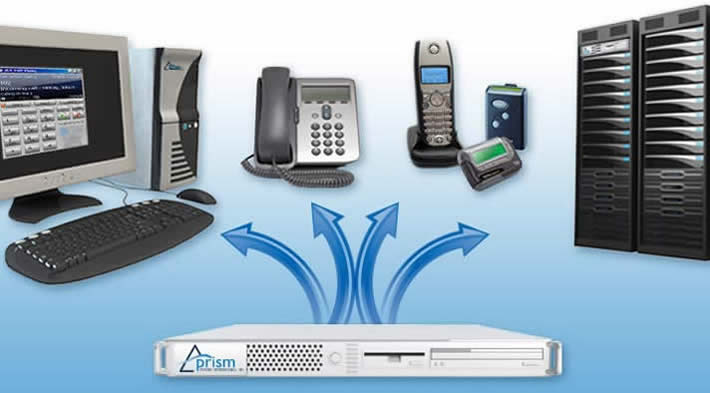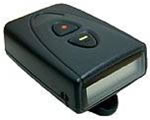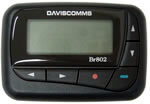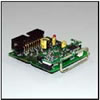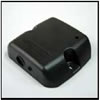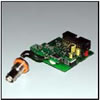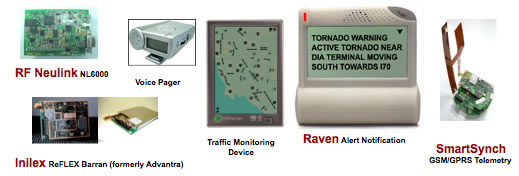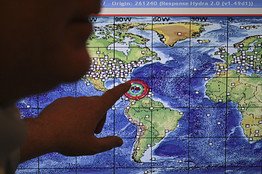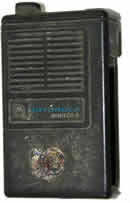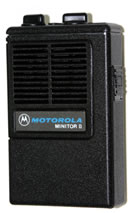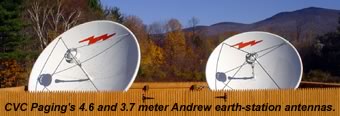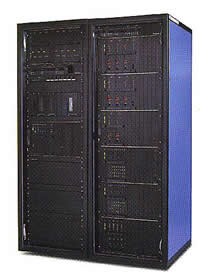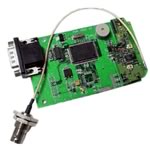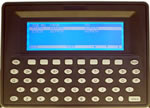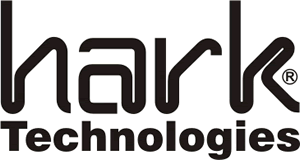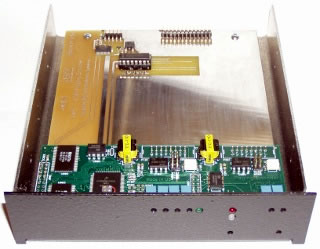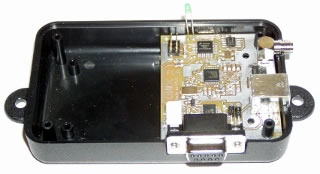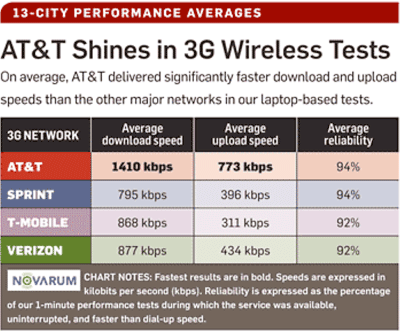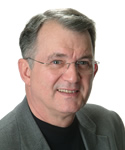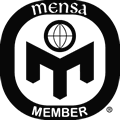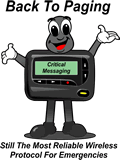Prepared Remarks of
Chairman Julius Genachowski
Federal Communications Commission
New America Foundation
Washington, D.C.
February 24, 2010 "Mobile Broadband:
A 21st Century Plan for U.S. Competitiveness, Innovation and Job Creation" Thank you Steve for that introduction, and thanks to the New America Foundation for hosting today’s event. I want to recognize New America for its thought leadership on communications and spectrum issues, in particular, the work of Michael Calabrese on your Wireless Future Program and Sascha Meinrath on the Open Technology Initiative. New America has filed extensive and specific comments on our National Broadband Plan. Everyone here should know that we took them to heart, and if you have a problem with the substance of my remarks or the Plan, you should take it up with Steve Coll, not me. As many of you know, as part of the Recovery Act, Congress and the President charged the FCC with developing a strategy to bring high-speed Internet and its benefits to all Americans. Less than a month from now, we will deliver this National Broadband Plan to Congress. In the past, I’ve likened the development of this plan to running a marathon at a sprinter’s pace. But as I was watching my required 3 hours of NBC last night, I realized that a more apt sports metaphor for the National Broadband Plan would be the Winter Olympics. Let me explain: First, the National Broadband Plan will be the culmination of a tremendous amount of hard work and effort. For months a dedicated team has been working around the clock. A team that includes engineers, economists, and entrepreneurs; lawyers, academics, analysts, and consumer advocates; some of the very best public servants in the business, drawing from every bureau at the FCC. They have been driven by the imperative of developing a meaningful plan for U.S. global leadership in broadband to create jobs and economic growth; to unleash new waves of innovation and investment; and to improve education, health care, energy efficiency, public safety, and the vibrancy of our democracy. Hats off to this world-class team. The second way the National Broadband Plan is like the Olympics — the ultimate goal is to earn a gold medal for the United States. The challenge is: we are lagging behind when it comes to broadband. Multiple studies have the U.S. ranked outside the top 10 when it comes to broadband penetration and speed. While some people take exception with those studies, few would suggest that we are leading the world in broadband, or are even as close as we should be. And I can tell you from speaking to my counterparts in other countries, the rest of the world is not sitting around waiting for us to catch up. Consider a study that Intel CEO Paul Ottelini described yesterday. The study ranked the U.S. 6th in the world in innovative competitiveness, and 40th out of the 40 countries ranked in “the rate of change in innovative capacity.” The first of those rankings is enough of a concern. That last-place statistic is the canary in the coal mine. The costs of our failure to lead are high. As IBM CEO Sam Palmisano recently put it, “Without pervasive broadband, our country will not be prepared for a new world that is increasingly built on the fusion of the physical and the digital.” For U.S. businesses to lead across the globe and for innovation to flourish at home, we need to invest in the infrastructure of the future: broadband. We need robust and open broadband, flourishing with applications and services that we can only begin to imagine. We have extraordinary capacity in the U.S. to build the best computers, chips, and applications in the world. But we are at risk of that asset being wasted if we don’t have great broadband infrastructure, wired and wireless. It would be like having the technology for great electric cars, but terrible roads. When it comes to mobile broadband, our goal is clear: To benefit all Americans and promote our global competitiveness, the U.S. must have the fastest, most robust, and most extensive mobile broadband networks, and the most innovative mobile broadband marketplace in the world. This will be a core goal of our National Broadband Plan. To meet that goal, our plan is ambitious but straightforward: Accelerate the broad deployment of mobile broadband by moving to recover and reallocate spectrum; update our 20th century spectrum policies to reflect 21st century technologies and opportunities; remove barriers to broadband buildout, lower the cost of deployment, and promote competition.  The Mobile Opportunity The Mobile Opportunity No area of the broadband ecosystem holds more promise for transformational innovation than mobile. Breakthrough new devices that put the power of a “PC-in-your-pocket,” combined with billions in network investments have liberated broadband from the desktop and made it possible to imagine a world where the Internet is available to anyone, anywhere, anytime. And some of America’s greatest innovators have clearly been working overtime to seize the opportunity, as the iPad and the Kindle attest. While mobile broadband is still in the preliminaries (to stick with the Olympics theme), we’ve seen enough to say some things definitively: This is a sector that can fundamental transform our society and economy. Mobile broadband can be about job creation and economic growth. Jobs in the mobile network economy — jobs building out and managing extensive mobile broadband networks. And jobs in the mobile apps economy. According to Gartner research, $4.2 billion in mobile applications were sold last year – up from essentially zero just a couple of years ago. The number of apps has crossed 150,000. Studies show that increases in mobile broadband adoption translate into increases in economic growth and job creation. Mobile broadband can be about education. Last week, a New York Times article described an Arizona school district that installed Wi-Fi on one if its school buses. The bus was instantly transformed into a rolling study hall. And if anyone ever doubts the power of mobile broadband tell them this: the driver says that bus of high school kids is now quiet. Mobile broadband can be about healthcare. Mobile medicine takes remote monitoring to a new level. A patient’s heart rhythm can be monitored continuously, regardless of her whereabouts, and diabetics can receive continuous, flexible insulin delivery through real-time glucose monitoring sensors that transmit date to wearable insulin pumps. Mobile broadband can be about energy. With mobile broadband, consumers and businesses can utilize Smart Grid-enabled information services. A whole new world of “energy apps” can adjust lights, heating, and cooling from a smartphone or netbook, saving electricity, saving our environment, and saving money to boot. Mobile broadband can be about public safety. With mobile broadband, EMTs can beam images of a patient wirelessly from the road so that emergency room doctors can review them while the patient is in transit. First responders can also access a patient’s medical records almost instantaneously when they arrive on the scene. Mobile broadband can about 21st century government and enhanced civic engagement. During the recent snowstorm, Howard County, Maryland equipped all 120 of its snow plows with GPS receivers. A website displayed the trucks’ positions and the status of county streets, and county residents could see which streets had been plowed, salted or sanded. Families who lost power used their smartphones as a lifeline, coordinating cleanup efforts. We’re all seeing the ways in which mobile services like Twitter can enhance participation in public life – and of course that’s just the beginning.  The Mobile Challenge The Mobile Challenge And so these early days of mobile broadband demonstrate tremendous opportunities. But they also reveal serious challenges to America’s hopes for global leadership in mobile. For starters, although the potential of mobile broadband is limitless, its oxygen supply is not. Spectrum — our airwaves — really is the oxygen of mobile broadband service. Without sufficient spectrum, we will starve mobile broadband of the nourishment it needs to thrive as a platform for innovation, job creation and economic growth. And the fact is America is facing a looming spectrum crunch. As part of our broadband process the FCC received a letter from over a hundred companies — including Amazon, Apple, AT&T, Cisco, Dell, Intel, Microsoft, Motorola, and Verizon – entities representing billions in investment and millions of American jobs. These companies were united in telling the FCC [quote]: “Without more spectrum, America’s global leadership in innovation and technology is threatened.” Let’s look at some numbers. Mobile data usage is not just growing, it’s exploding. AT&T reports that its mobile data traffic is up 5,000% over the past three years. That’s not surprising when you consider that a typical smartphone generates 30 times the traffic of a traditional data-enabled phone — and a netbook generates 450 times more traffic. According to Cisco, North American wireless networks carried 17 petabytes per month in 2009. By 2014, they are projected to carry 740 petabytes per month. Now even if you think a petabyte is something that sends you to the emergency room, you know that that’s a game-changing trajectory. There is spectrum coming to market. Counting 2008’s 700 MHz auction, the FCC in recent years has authorized a 3-fold increase in commercial spectrum for mobile broadband. But that increase will not allow us to keep pace with an estimated 30-fold increase in traffic. While the spectrum crunch is a serious obstacle threatening the growth of mobile broadband, it is not the only one. Wireless providers also face red tape and needless barriers, which slow deployment and increase the costs of investment. The costs of obtaining permits and leasing pole attachments and rights of way can amount to 20 percent of fiber deployment, which is necessary for wireless networks as well as wired networks. With our tower-siting shot-clock order in November, the Commission has already begun taking action to cut red tape, lower the costs of investment, and accelerate network deployments — but more needs to be done. Another serious problem is that the mobile broadband revolution is not reaching all Americans. Many homes are technically passed by mobile broadband networks, but still cannot get a clear signal inside their home. And a mobile divide is an increasingly important part of the digital divide. In Alaska, for example, 23% of its population doesn't have access to 3G mobile broadband. In West Virginia, at least 29% of its population lacks coverage. We also see disproportionately low adoption rates among certain populations, such as persons with disabilities. A final major issue: we are still way behind on communications interoperability for first responders, years after a call to action was issued by the 9/11 Commission. And the situation is even worse when it comes to mobile broadband for first responders. While a portion of the 700 MHz spectrum has been allocated for public safety broadband use, our country still needs to build out that network.  America’s 2020 Broadband Vision America’s 2020 Broadband Vision With our National Broadband Plan, the Commission will lay out its most dramatic actions yet to position America as a global leader in mobile broadband innovation. What are we going to do? The Broadband Plan will represent the first important step in what, my colleague, FCC Commissioner Meredith Attwell Baker, has urged us to pursue: “an ongoing strategic planning process on spectrum policy — to ensure that the agency’s stewardship of the public’s airwaves is smart, future-oriented, and serves as an ongoing engine of innovation and investment.” First, we are going to announce a gameplan to unleash more spectrum for mobile broadband. The National Broadband Plan will set a goal of freeing up 500 Megahertz of spectrum over the next decade. We will work closely with NTIA to do so. One of the best ways for us to achieve the right balance in the supply and demand of spectrum is to establish market-based mechanisms that enable spectrum intended for the commercial marketplace to flow to the uses the market values most. The Broadband Plan will recommend one such mechanism. It will propose a “Mobile Future Auction” — an auction permitting existing spectrum licensees, such as television broadcasters in spectrum-starved markets, to voluntarily relinquish spectrum in exchange for a share of auction proceeds, and allow spectrum sharing and other spectrum efficiency measures. Now, I’ve mentioned broadcast spectrum — so let me be clear: the recommendation is for a voluntary program. While overwhelmingly — roughly 90% — of Americans receive their broadcast TV programming in most major markets through cable wires or satellite signals, there are still millions of Americans who receive TV through over-the-air antenna TV. Broadcasters would be able to continue to serve their communities with free over-the-air local news, information, and entertainment; and they would be able to experiment mobile TV. The Mobile Future Auction would allow broadcasters to elect to participate in a mechanism that could save costs for broadcasters while also being a major part of the solution to one of our country’s most significant challenges. Why look at broadcast spectrum as a major part of our spectrum strategic planning? First, a broad range of analysts, companies and trade associations participating in our Broadband proceeding agree that a clear candidate for allocation is spectrum in the broadcast TV bands. They point to a massive amount of unlocked value in that spectrum, which has characteristics that make it particularly suitable for mobile broadband — one study suggests that as much as $50 billion in value could be unlocked if we adopted policies to convert some of the broadcast spectrum to mobile broadband. This suggests that there are inefficiencies in the current allocation. A second reason is that the highly valuable spectrum currently allocated for broadcast television is not being used efficiently — indeed, much is not being used at all. About 300 megahertz of spectrum have been set aside for broadcast TV. In markets with less than 1 million people, only 36 megahertz are typically used for broadcasting. In cities with more than 1 million people, on average about 100 megahertz are used. Even in our very largest cities, at most only about 150 megahertz out of 300 megahertz are used. This is true even after the recent reallocation for digital television, which freed up some spectrum for mobile broadband. New technologies allow — indeed, they require — new strategic planning to ensure the most efficient use of spectrum, a vital public resource, especially given our broadband needs. Because of the billions of dollars of unlocked value in broadcast spectrum, and because of the current inefficient spectrum allocation, the Mobile Future Auction is a win-win proposal: for broadcasters, who win more flexibility to pursue business models to serve their local communities; and for the public, which wins more innovation in mobile broadband services, continued free, over-the-air television, and the benefits of the proceeds of new and substantial auction revenues. One thing is clear. It typically takes quite some time from the beginning to end of a Commission strategic spectrum reallocation process. But the clock is ticking on our country’s mobile broadband leadership opportunity and our global competitiveness challenge, and we have to get started. Our Plan for mobile broadband will also recommend applying a flexible approach to other frequency bands, where our rules — technical rules, service rules — may be holding back the broadband potential of large swaths of spectrum. We need to bring our spectrum policies into the 21st century. The Plan proposes resolving longstanding debates about how to maximize the value of spectrum in bands such as the Mobile Satellite Service (MSS) or Wireless Communications Service (WCS) by giving licensees the option of new flexibility to put the spectrum toward mobile broadband use—or the option of voluntarily transferring the license to someone else who will. Vital elements of the Commission’s charter are to ensure that, in exercising our responsibilities with respect to spectrum, we promote competition and ensure that spectrum use is in the public interest, and of course all spectrum policy decisions will be made with that in mind. In addition, our National Broadband Plan will encourage innovative ways of using of spectrum, including what some call “opportunistic” uses, to encourage the development of new technologies and new spectrum policy models. Unlicensed spectrum, for example, has been a proven testbed for emerging competition, injecting new investment and innovation into the marketplace, and spawning new services and devices from Bluetooth to WiFi technology. The market for WiFi network equipment alone is about $4 billion a year, and analysts project the market for WiFi-enabled health products will reach $5 billion by 2014. This is what people used to call the “junk band” until the FCC released it for unlicensed use and innovators got to work. In addition, new ideas such as databases that dynamically enable — or revoke — access to spectrum in particular times and places promise to change the way we think about spectrum. For example, entrepreneurs could create new types of devices and ad hoc networks, enabling innovative new uses of spectrum. And, spurred by the smart persistence of my colleague Commissioner Michael Copps, the Plan will include a recommendation that we invest a sufficient amount in R&D to ensure that the science underpinning spectrum use continues to advance To close the adoption gap, our Plan would propose the creation of a Mobility Fund, as part of broader reforms of the Universal Service Fund. Without increasing the overall size of universal service funding, the Plan will seek to provide one-time support for deployment of infrastructure enabling robust mobile broadband networks, to bring all states to a minimum level of mobile availability. Bringing all states up to a national standard will help enable Americans in unserved areas participate in the mobile revolution. Finally, and critically, to improve mobile communications for our first responders, we will develop the 700 MHz public safety broadband network to achieve long overdue interoperability. I will have more to say on public safety tomorrow, but let me just mention now that we will have a comprehensive public safety strategy in the National Broadband Plan. At a high level, our goals will be achieved through public-private partnerships between public safety and 700 MHz commercial providers, including, but not limited to, a commercial licensee of the “D block.” The plan will also recommend that we establish and fund an Emergency Response Interoperability Center (ERIC) within the FCC to develop common technical standards for interoperability on the public safety broadband network from the start, and to update these standards periodically as broadband technology evolves. These are all programs in an ambitious Plan to deliver the benefits of broadband service, both wireless and wired, to all Americans and to invest in and build a world-leading broadband infrastructure in the U.S. There is an enormous amount of work to be done. The National Broadband Plan will chart a clear path forward. And if we do not seize the moment, I fear for the opportunity we will have lost. I’d like to close with one last comparison to the Olympics. The Olympics are unique in sport because they only come every four years. When you get your chance, you better make it count, because you don’t know when, or if, you’ll get another shot. With this Plan, we have a special opportunity to lay a foundation for American leadership in the 21st century. If we get it right, broadband will be an enduring engine for creating jobs and growing our economy, for spreading knowledge and enhancing civic engagement, for advancing a healthier, sustainable way of life. This is our moment. Let’s seize it. #### | 





